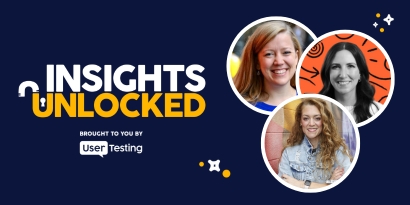
Episode 104 | December 11, 2023
Building a customer feedback loop for your startup or small business
In this Insights Unlocked episode, we talked with Siena Hickey with the Sanzo Strategy Group about why startup founders should lean into talking with their customers more, and what the risks are if they don’t.
Building a customer feedback loop for your startup or small business
You can improve the odds of your startup’s success by talking with your customers and making sure they believe in your product or service offering as much as you do.
So why do so many founders have a hard time talking with customers?
“We prioritize the things that we're good at,” said Siena Hickey with the Sanzo Strategy Group. “The startup founders that I work with dive into a product with an engineering background or from a previous product experience. But we put off the things that are not obvious to us. Where do you go to identify your target audience and how do you have a literal conversation with them?”
In this Insights Unlocked episode, we talked with Siena about why startup founders should lean into talking with their customers more, and what the risks are if they don’t. Siena has consulted brands across America, Europe, Asia, and Africa on the nuances of product market fit.
Startups and small businesses are the backbone to a healthy economy. Startups create more jobs, spur innovation and inject competition, all of which improve local and regional economies. Consider the impact Alibaba has had on Hangzhou, Microsoft on Redmond and Google on Mountain View. All were once small startups.
Why startup founders should talk with customers
"It's probably the question I get most often in the discovery phase with potential clients," she said. "Why do we need to invest in this, or why is it important to think about customer research as a part of that initial startup team? Until you actually go out and talk to customers, you can never be fully certain how it is they want to be spoken to."
Customer feedback can vary depending with whom you’re talking. For product teams, customer research might mean validating prototypes and concepts. For marketing teams, it may mean testing brand designs and messaging before a launch. UX researchers talk to customers to better understand and design their experiences using a product or service.
“People hear that word feedback and they often assume that it’s inherently negative,” Siena said. “Customer feedback is the way to decide how your business moves forward, and it does take a different type of vulnerability to open up your hard work to the people that you want to like it the most.”
And if you haven’t guessed already, there’s no better way to understand what your customers need than by asking them.
Many startups fail due to some aspect of product market fit. Founders start a company because they see a problem that needs to be solved. But does your product really address a core problem that an audience has, and do you know who that audience is?
For startup founders, getting customer feedback allows you to identify and remedy small problems before they have the chance to become critical issues down the line, as well as ensure product market fit.
“Talking to users is the fastest way to isolate and prioritize those inevitable issues that will arise during your product development journey,” Siena said.
How to talk with your prospective customers and target audience
Siena said talking with customers gives founders a deeper understanding of the challenges customers have and the words they use to describe them, as well as what they think they need to address those challenges. “That feedback from first movers and power users helps you learn the language of the customer, and what their true ‘A-ha’ moments are.” she said.
She offered three inexpensive ways to begin getting feedback. Her number one way is through surveys. “Surveys are always a great tool to use,” she said, “Whether you are attaching them to an email campaign or offering them a link inside of a Facebook group or a WhatsApp community.”
She said a second way to better understand your customers, especially if you already have a product on the market, is by reading customer reviews. Alternatively, you can also read the reviews of your competitors, learning both the language of your target customers and possible unmet opportunities.
Finally, she said, a third option is creating a customer advocacy program. “And that's just a fancy way of saying, let's get together a group of customers that we can rely on for consistent feedback.”









